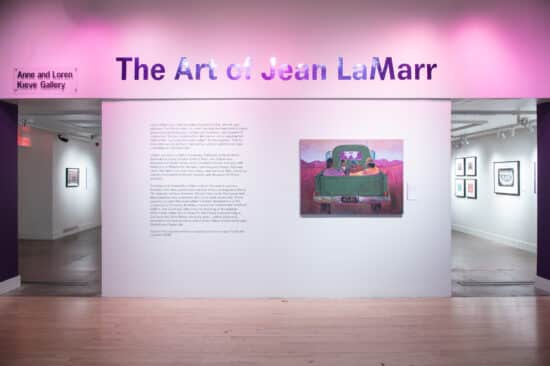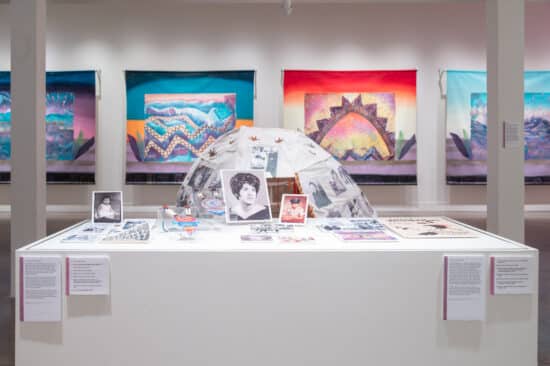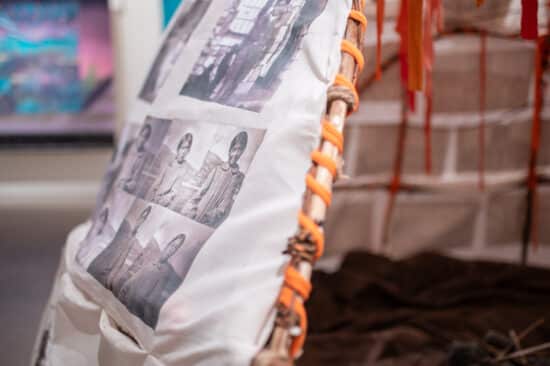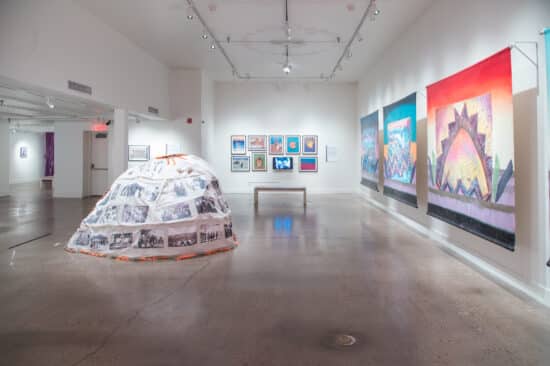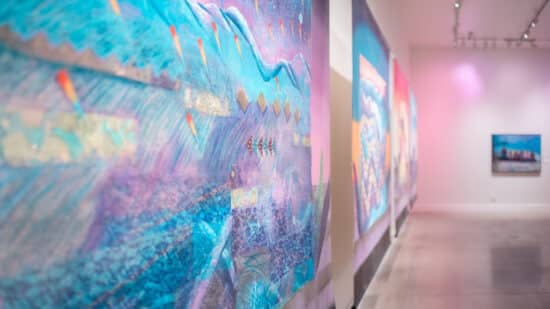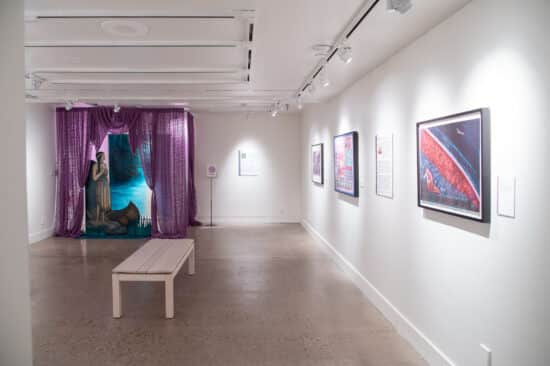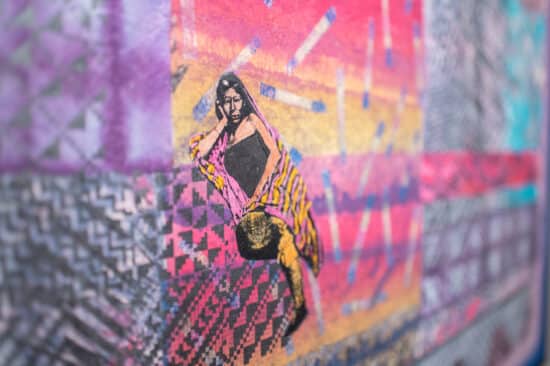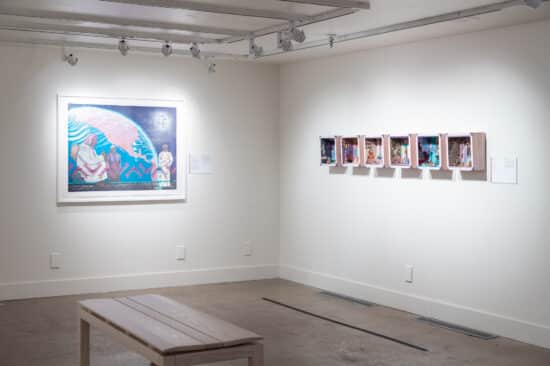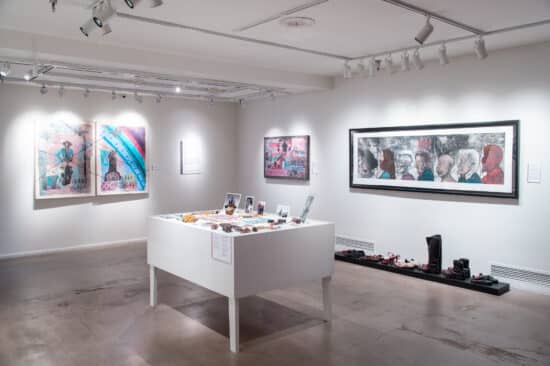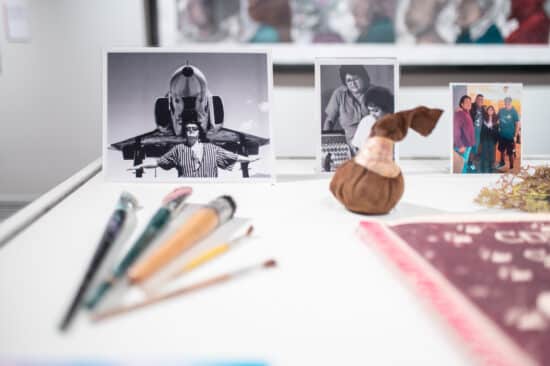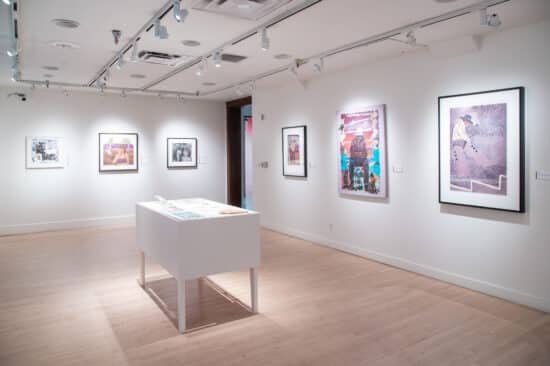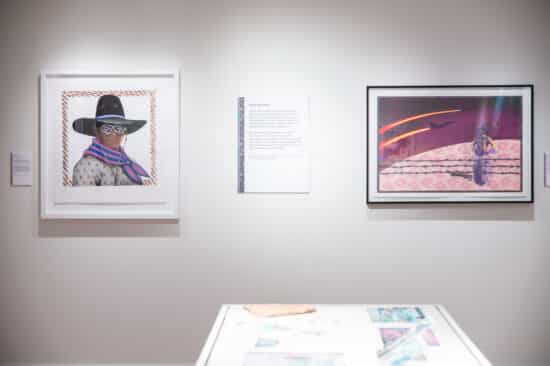
- This event has passed.
The Art of Jean LaMarr
Fri, August 18, 2023–Sun, January 7, 2024
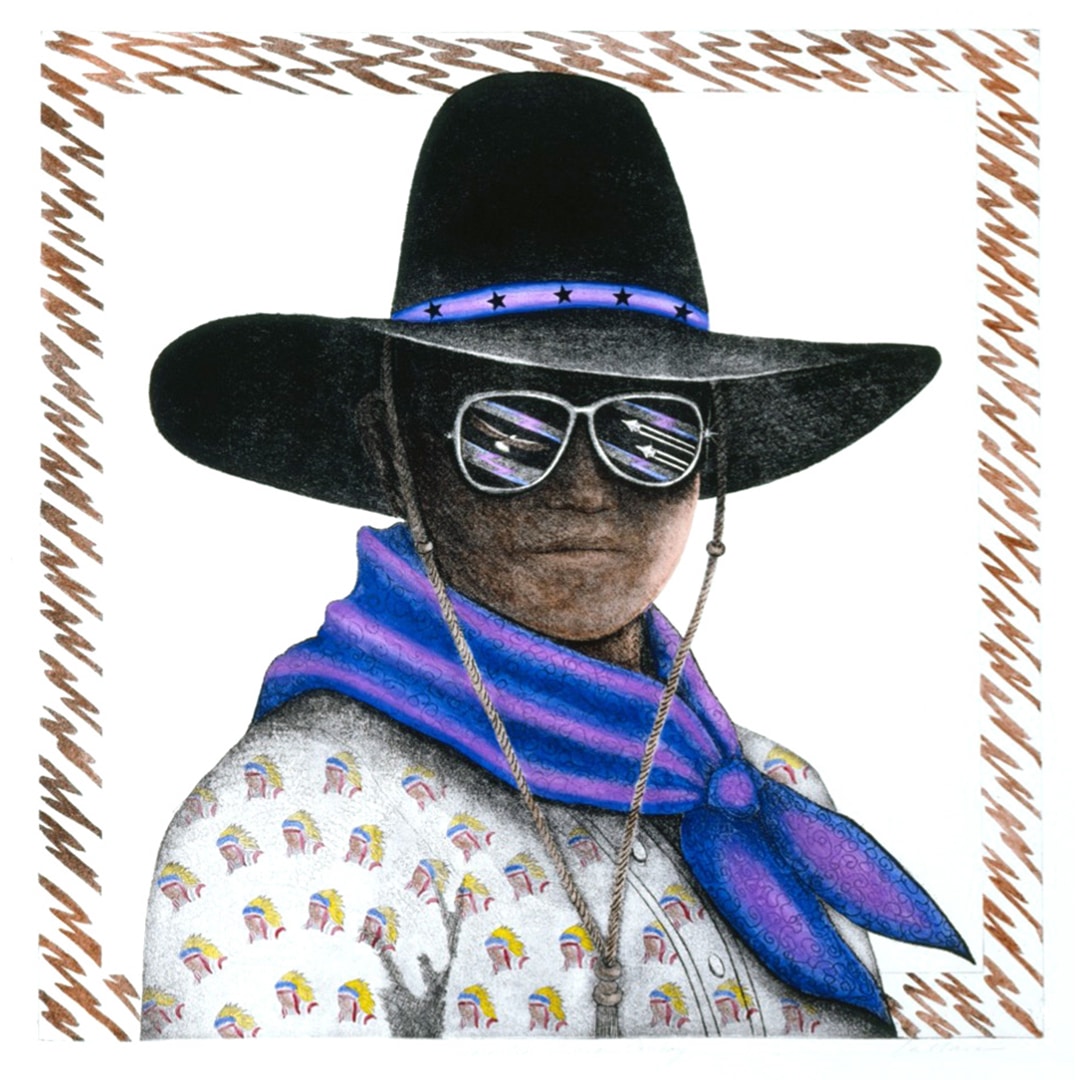
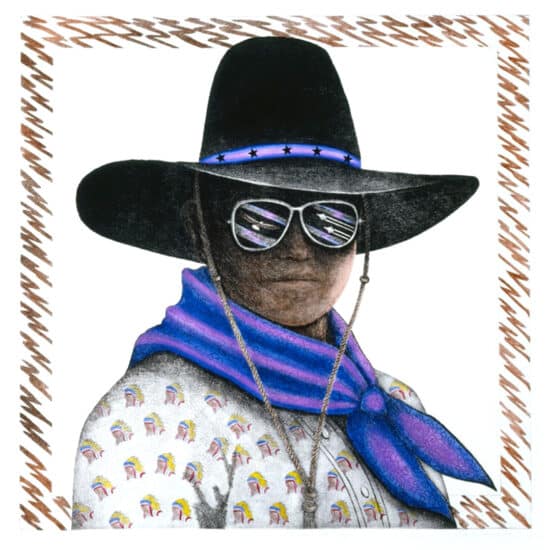
Jean LaMarr, Vuarneted Indian Cowboy, 1984, hand-colored etching, 23.75 in x 23.5 in. Collection of the Nevada Museum of Art, museum purchase.
Jean LaMarr’s colorful and seductive yet hard-hitting satirical artworks challenging long-held cultural stereotypes and preconceptions about Native American people and cultures will be on view in the exhibition The Art of Jean LaMarr at the IAIA Museum of Contemporary Native Arts from August 18, 2023, through January 7, 2024. The Art of Jean LaMarr, organized by the Nevada Museum of Art (NMA), features more than 60 artworks including paintings, prints, and sculptures spanning from the 1970s to the present. Jean LaMarr (Susanville Indian Rancheria), an internationally recognized artist, educator, and Native American advocate with ancestral ties to Pyramid Lake, Nevada, and Susanville, California, sparks powerful and important conversations about racist imagery, representations of Native women, legacies of colonization, and environmental justice.
“The Nevada Museum of Art is proud to present this major exhibition of work by Jean LaMarr, who has been a respected artist involved in the Great Basin arts community for decades,” says NMA Andrea and John C. Deane Family Senior Curator and Deputy Director Ann M. Wolfe. “While Jean lives and works in the relatively secluded rural community of Susanville, she has exhibited her work widely and is highly regarded by scholars, curators, and artists around the world.” MoCNA Chief Curator Dr. Manuela Well-Off-Man adds, “We are excited to host this exhibition at MoCNA, especially since Jean LaMarr taught at IAIA for several years and contributed to advancing contemporary Native art through works that powerfully blend Indigenous cultural elements with Modern art and paved the way for many female Native artists.”
LaMarr (born 1945) is descended from Wada Tukadu Numu (Northern Paiute) and Illmowi, Aporige, and Atsugewi (Pit River) ancestry, with strong family ties to Northern Nevada and Northern California. She was born and raised in Susanville, California, and is now an enrolled member of the Susanville Indian Rancheria in Susanville, California, where she lives. In 1964, LaMarr relocated to San Jose, California as part of the Indian Relocation Act, and in 1976 she graduated from UC Berkeley, where she became involved in activist politics and participated in protests including the American Indian Occupation of Alcatraz (1969) and the Pit River Occupation in Shasta County (1970).
LaMarr founded the Native American Graphic Workshop in Susanville in 1994 to help engage Native American youth, elders, and community members in artmaking. LaMarr largely built her artistic reputation as a skilled printmaker while teaching and practicing as an artist in the San Francisco Bay Area in the 1970s and 80s. She went on to teach at IAIA in Santa Fe for many years before returning to Susanville.
LaMarr believes “that one painting would be in one home or museum, but a print or video or mural would reach everyone… One painting might be worth a million dollars, but prints will reach millions of people.” For nearly a decade, LaMarr designed the popular Bear Dance posters for the annual Maidu gathering held in the mountain community of Janesville, California, just an hour north of Reno, Nevada. Many of LaMarr’s screenprints feature bold graphics and bright colors that communicate a direct political message to viewers.
My art is a “rejection of the idea of the vanished American Indian,” LaMarr says, explaining that contemporary Native American people are part of vibrant and living cultures. While her paintings, prints, and installations celebrate and honor ancestors and cultural traditions, they also confront racist stereotypes of Native American people, such as those perpetuated by Henry Wadsworth Longfellow in his epic 1855 poem “Song of Hiawatha,” or Slim Whitman’s popular 1924 song “Indian Love Call.” In her Cover Girl series and in many other artworks, LaMarr has worked tirelessly to reclaim the dignity of Native American women, whose bodies were often exploited by early twentieth-century non-Native anthropologists and photographers and later appropriated for use on consumer product packaging. Another strand of LaMarr’s work tackles the legacies of colonialism, including the impacts of ongoing environmental trauma on Native American tribal communities in the American West.
“Jean LaMarr speaks from a place of fierce pride in her indigeneity, and a willingness to challenge the erasure and structural racism that Indigenous Peoples face in their lives. Her work has that razor-sharp political commentary, yet can transmit the softness and beauty of our cultures, particularly of Indigenous women,” says Dr. Debra Harry (Kooyooe Tukadu Numu from Pyramid Lake), Associate Professor of Indigenous Studies in the Department of Gender, Race, and Identity at the University of Nevada, Reno.
In conjunction with this exhibition, the Nevada Museum of Art has published a hardcover book, The Art of Jean LaMarr, which will be available for purchase in the MoCNA Museum Store. The Art of Jean LaMarr includes an essay by Ann M. Wolfe, the NMA Andrea and John C. Deane Family Chief Curator and Associate Director, with contributions from Allan L. Edmunds, Mary Lee Fulkerson, Debra Harry, Ph.D., Archana Hortsing, Lucy Lippard, Judith Lowry, Susan Lobo, Ph.D., Malcolm Margolin, Raymond Patlan, Jan Rindfleisch, and Peter Selz. The exhibition will also be accompanied by Purple Flower Girl (2022), a short video about LaMarr produced and directed by Tsanavi Spoonhunter, who is a descendant of the Northern Paiute, Lakota and Northern Arapaho nations, and who received her master’s degree from the Graduate School of Journalism at the University of California, Berkeley, with a focus in documentary filmmaking.
The IAIA Museum of Contemporary Native Arts (MoCNA) presentation of The Art of Jean LaMarr is supported by the Ford Foundation. The exhibition was originally sponsored by Carole K. Anderson; Nevada Arts Council; Kristi Overgaard; Sandy Raffealli | Bill Pearce Motors; The Phil and Jennifer Satre Family Fund at the Community Foundation of Western Nevada. Supporting sponsorship by Kathie Bartlett. Additional support in memory of Bernadette Kaye, sharing her culture; the Nevada Humanities and the National Endowment for the Humanities.
For more information, please contact IAIA Museum of Contemporary Native Arts (MoCNA) Chief Curator Manuela Well-Off-Man at manuela.well-off-man@iaia.edu.
